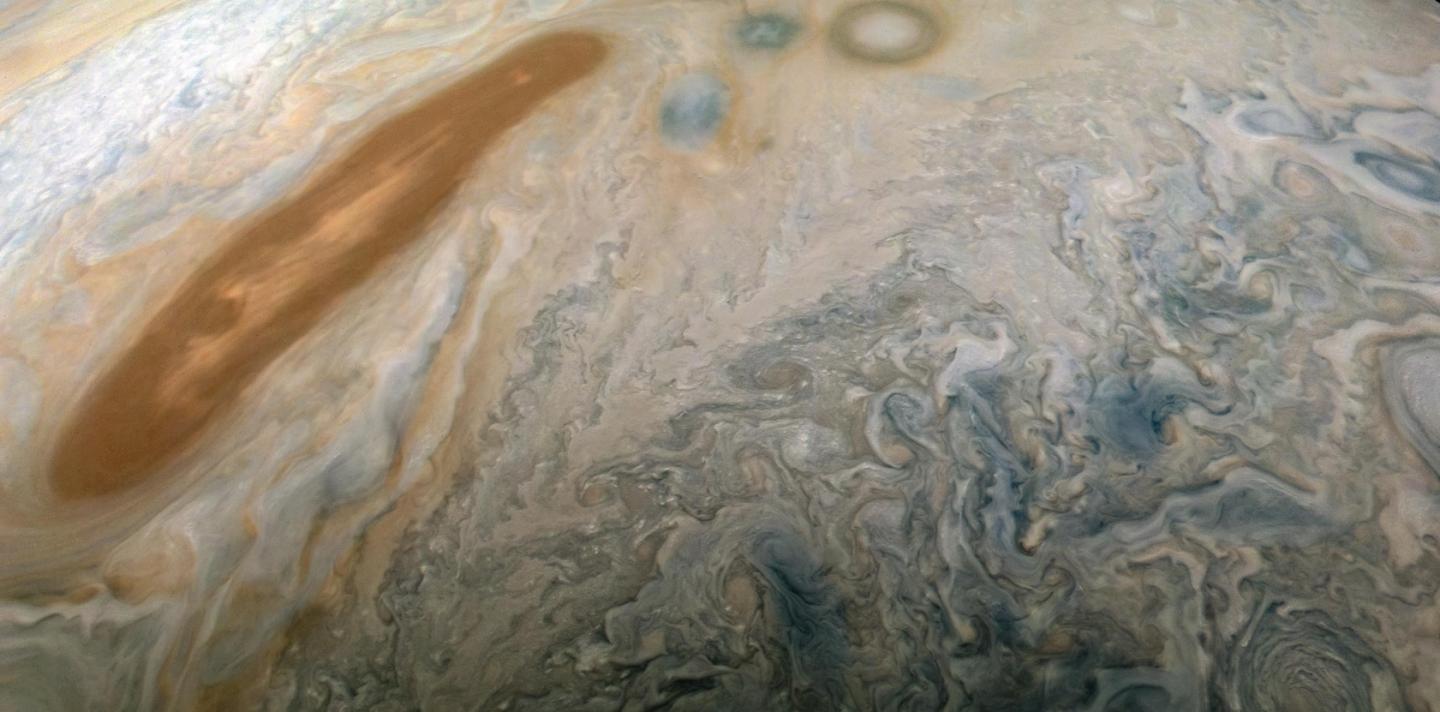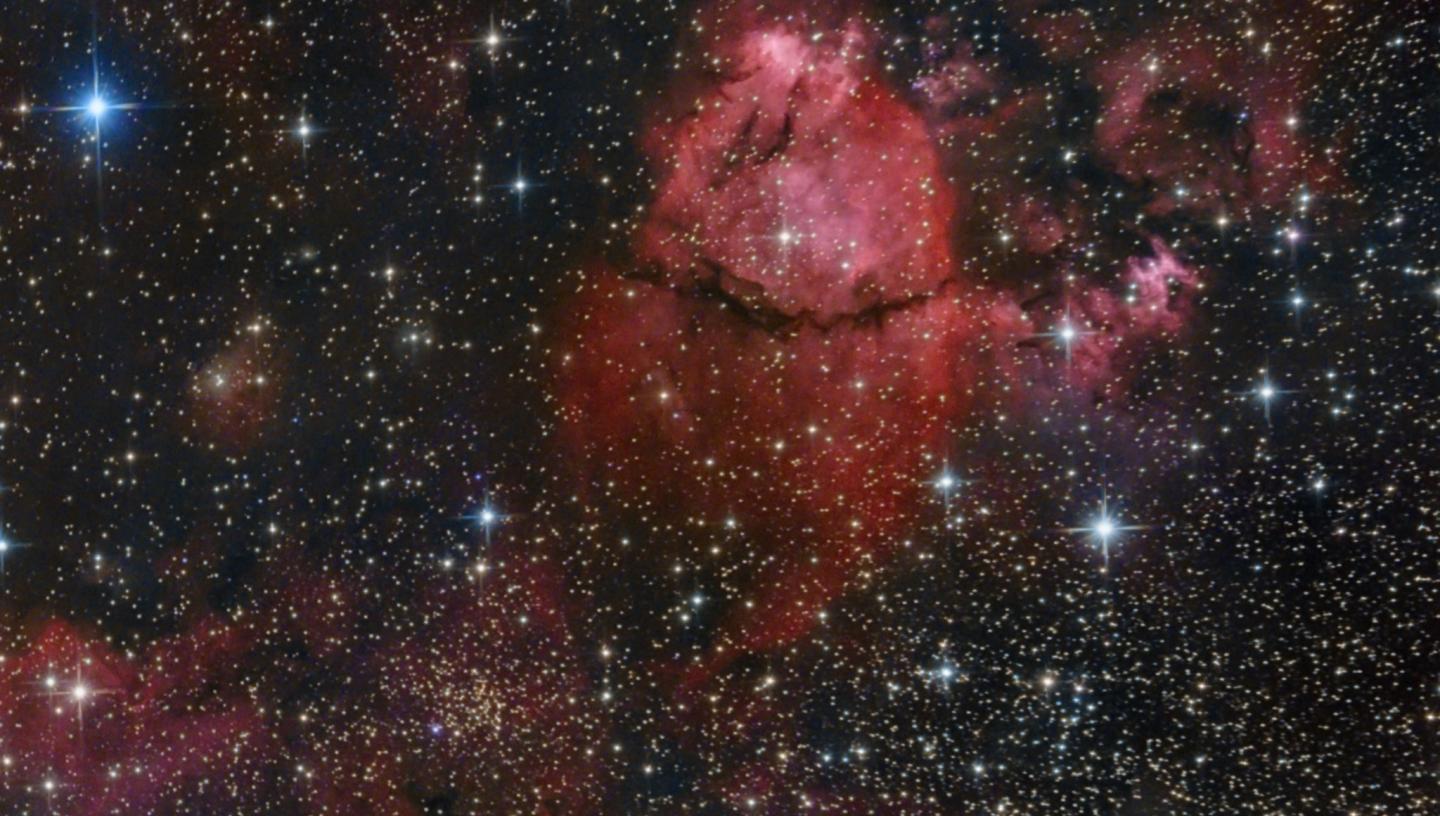
Discover what to see in the night sky during October 2019, including the Orionids meteor shower.
By Patricia Skelton, Astronomy Education Officer
(Details given are for London and may vary for other parts of the UK)
Top 3 things to see in the night sky in October:
- 3 October: Spot Jupiter lying close to a waxing crescent moon.
- 21/22 October: Keep an eye open - it's the peak of the Orionids meteor shower.
- 30 October: Hunt for Venus just after sunset.
Get closer to the night sky at the Insight Investment Astronomy Photographer of the Year exhibition
Look Up! Podcast
Subscribe and listen to the Royal Observatory Greenwich podcast. As well as taking you through what to see in the night sky each month, Royal Observatory Greenwich astronomers pick their favourite astro news story. For October they're chatting about cosmic collisions involving Jupiter, and they talk about water that has been detected in the atmosphere of an exoplanet. Have a listen below then vote for your favourite news story on our Twitter poll during the first week of the month.
Our podcast is also available on iTunes here.
Astronomy in October 2019: key events and what to see
Throughout the month: The Moon and planets
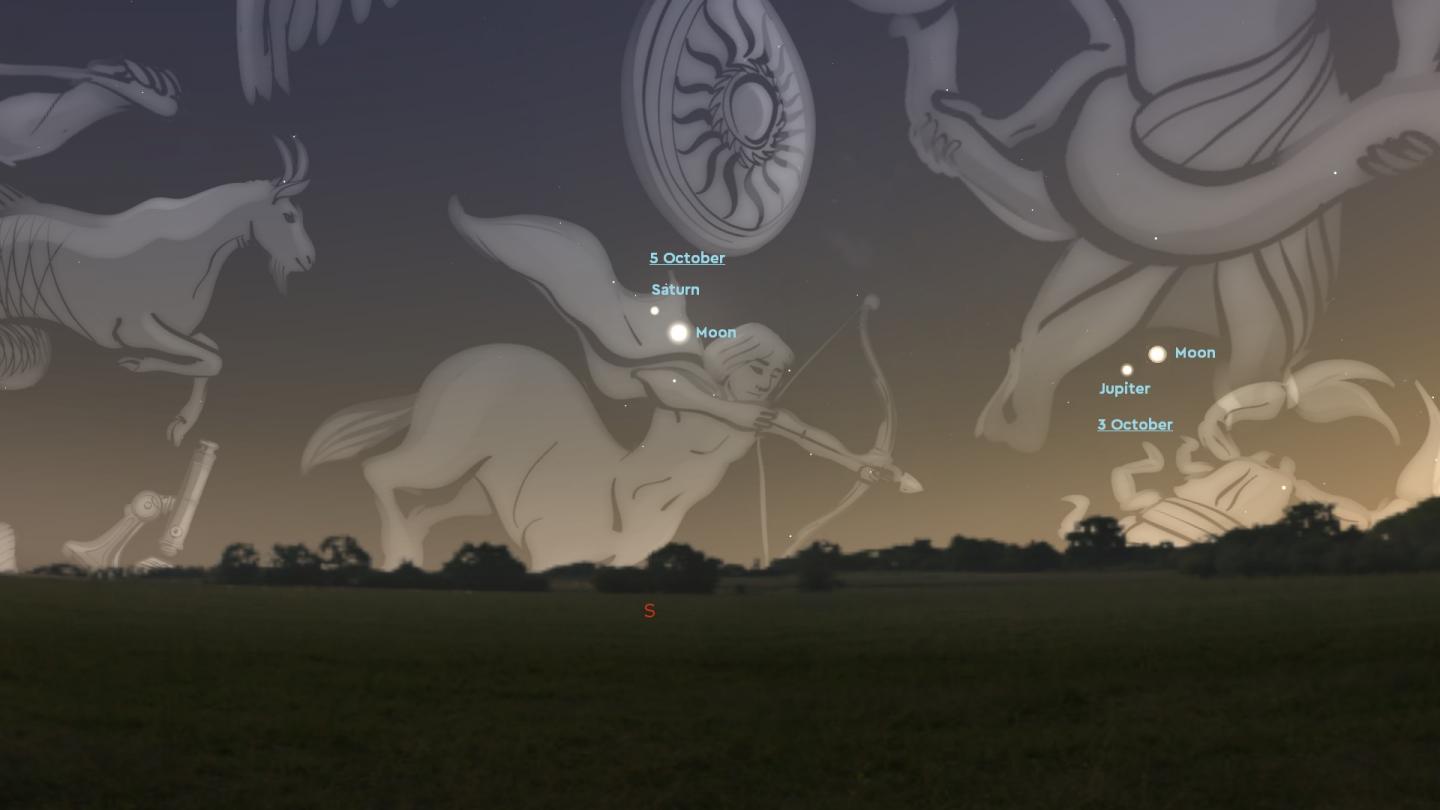
The Moon is the perfect celestial tour guide this month and will helpfully point out some planets to see.
On the evening of 3 October, you’ll spot the largest planet of our Solar System, Jupiter, lying to the bottom-left of a waxing crescent moon. Two nights later, on 5 October, look to the top-left of the first quarter moon to catch a glimpse of the ringed-planet Saturn.
For a challenge, shortly after sunset on 30 October, look towards the south-west and find the slender waxing crescent moon. Grab a pair of binoculars and trace a line from the bottom “horn” of the crescent moon towards the horizon and you should be able to spot Venus.
New moon occurs on 28 October, which provides optimal viewing conditions to look at Uranus which reaches opposition on the same day. Uranus will be at its brightest so, if you’re up for the challenge, try to spot the planet with the unaided eye.
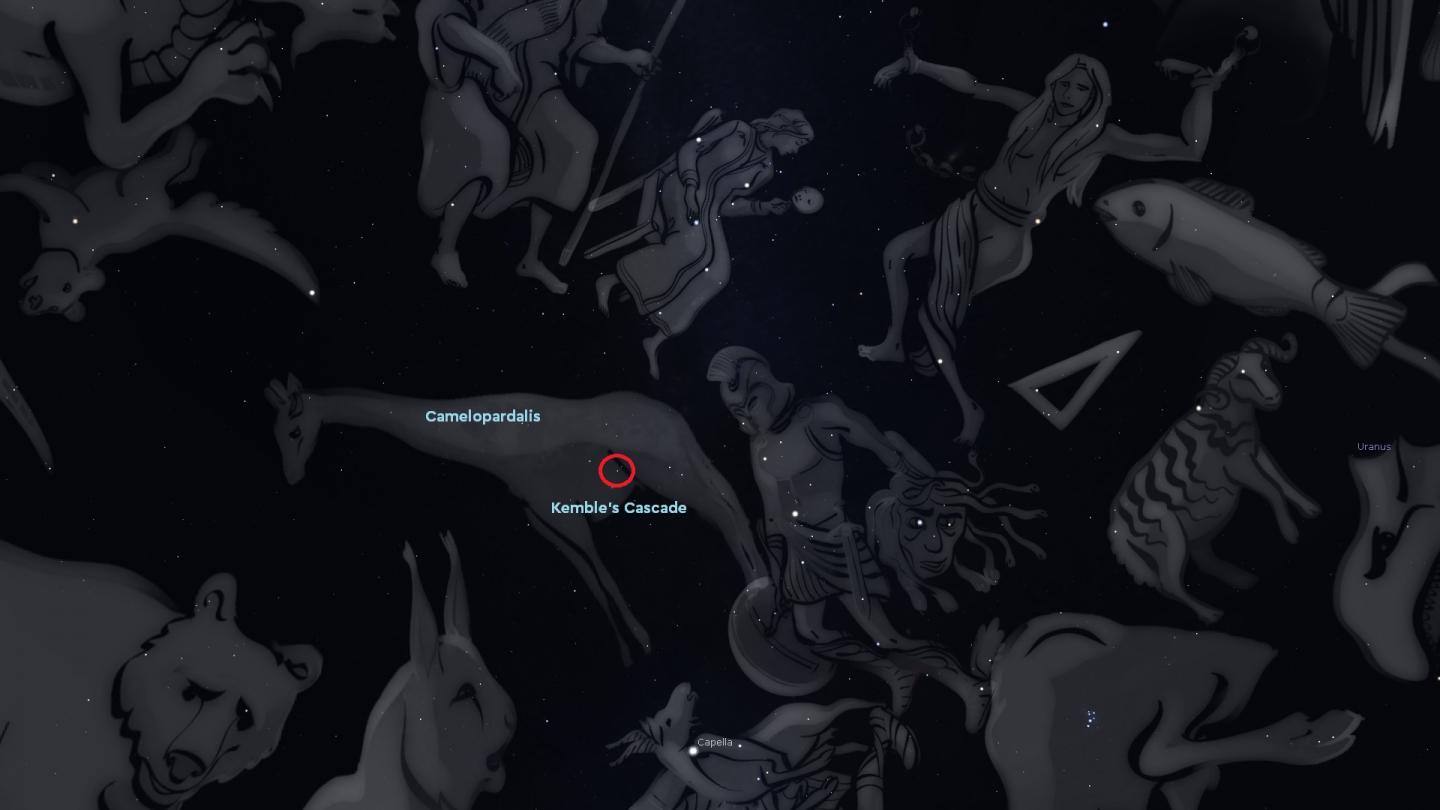
Asterisms are easy to recognise patterns of stars with the Plough, or Big Dipper, perhaps the most well-known asterism in the night sky.
Hidden inside the constellation Camelopardalis is an asterism known as Kemble’s Cascade. Containing around 20 faint stars nearly in a row, Kemble’s Cascade stretches over five times the width of a full moon. With a pair of binoculars, or a telescope, you’ll be able to see the full extent of this asterism.
To locate it, start at the ‘W’-shaped constellation Cassiopeia. Draw an imaginary line from Beta Cassiopeia, the second brightest star in the constellation, through Epsilon Cassiopeia, the fifth brightest star, and then extend this line by the same distance and you’ll find the asterism. Try to spot the two orange coloured stars in this colourful stellar cascade. Under dark sky conditions, you might be able to see NGC 1502, an open star cluster lying at the end of the cascade.
1 October: A trio of galaxies
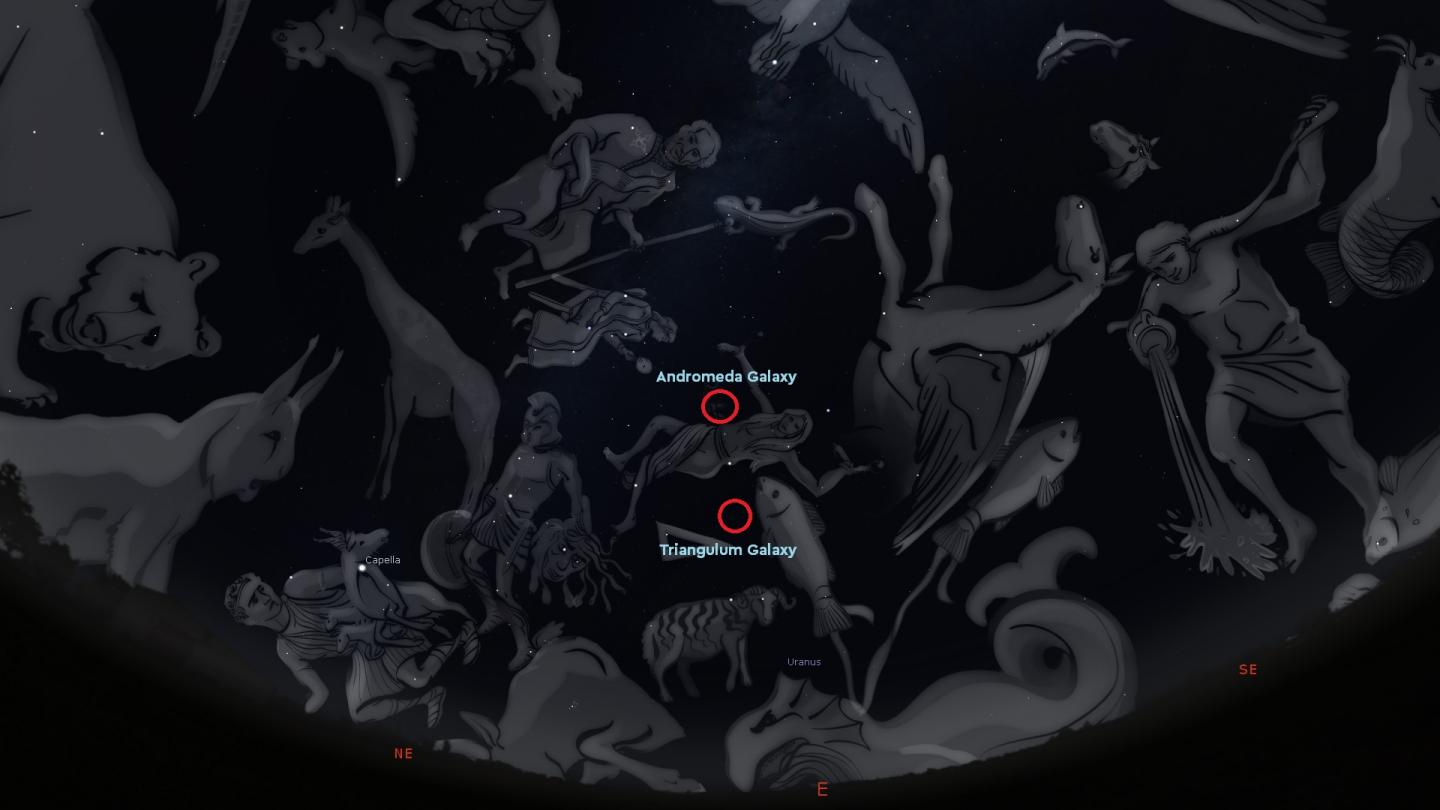
Dark skies at the beginning of the month provide the perfect opportunity to have a look at some galaxies.
Our own galaxy, the Milky Way, is home to around 200 – 400 billion stars and arches across the night sky. The Milky Way is one member of a group of galaxies known as the Local Group.
Two other members of this group, the Andromeda Galaxy and the Triangulum Galaxy, soar high in the sky around midnight and can be spotted with the unaided eye under clear and dark skies. However, if you live near a city, grab a pair of binoculars or a telescope for the best views of these distant galaxies.
The Andromeda Galaxy is the largest galaxy in the Local Group, followed by our own galaxy and then the Triangulum Galaxy. The Milky Way galaxy is on a collision course with the Andromeda galaxy and the two will merge in a few billion years' time to form “Milkdromeda”. The Triangulum Galaxy, which is suspected to be a satellite galaxy of the Andromeda Galaxy, might miss the initial cosmic collision but could end up merging with “Milkdromeda”.
21/22 October: The peak of the Orionids meteor shower
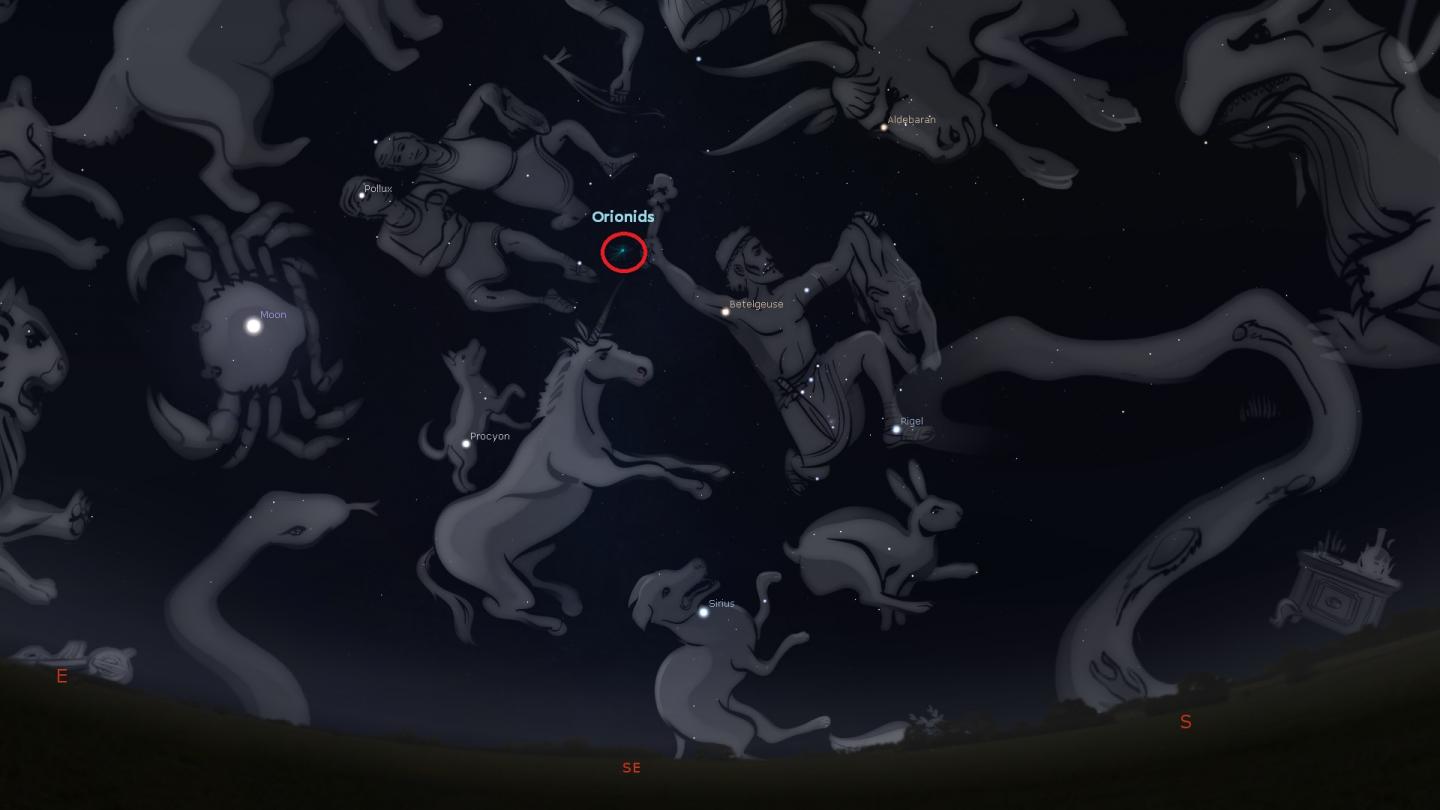
Halley’s Comet is responsible for producing the Orionids meteor shower which peaks on the night of the 21st and early morning on 22 October. The radiant of the meteor shower lies in the constellation Orion which is where the name for the meteor shower originates from.
As Halley’s Comet follows its path around our Sun, a trail of cometary debris is left behind. As the Earth passes through this debris trail, bits of comet collide with our atmosphere producing fiery streaks across the sky. Under optimal viewing conditions, observers would be able to see around 15 meteors per hour. Unfortunately, observers will have to contend with the light from a last quarter moon so, for your best chance to spot some meteors, head to a dark sky location and aim your gaze about 45 degrees away from the constellation Orion.
27 October: The end of British Summer Time
This day marks the end of British Summer Time with our clocks going back by an hour at 2am, so don’t forget to change your clocks. As we make our way towards the winter months, the hours of darkness will increase, providing more time for stargazing.
The Moon's phases this month
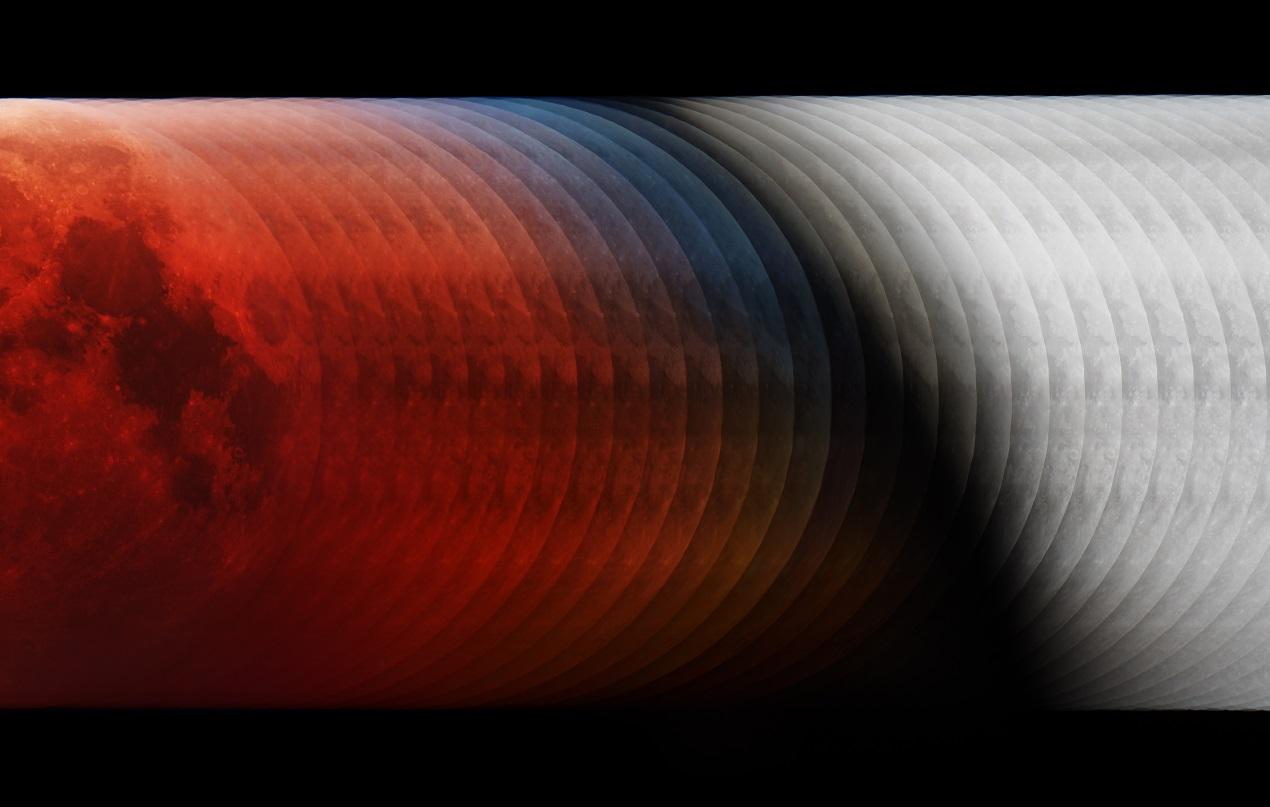
- 5 October - first quarter moon (5.47pm)
- 13 October - full moon (10.08pm)
- 21 October - last quarter moon (1.39pm)
- 28 October - new moon (3.39am)
Stargazing tips
- When looking at faint objects such as stars, nebulae, the Milky Way and other galaxies it is important to allow your eyes to adapt to the dark – so that you can achieve better night vision.
- Allow 15 minutes for your eyes to become sensitive in the dark and remember not to look at your mobile phone or any other bright device when stargazing.
- If you’re using a star app on your phone then switch on the red night vision mode.
- Need a stargazing telescope or binoculars? Check out our range of high quality observing equipment recommended by Royal Observatory astronomers.
See our range of observing equipment
Share your astronomy pictures
Congratulations to Christina Irakleous for her beautiful image of the night sky. She shared her image on our astrophotography Facebook page and we chose it for October's banner image.
If you want to be in with a chance to showcase your astrophotography skills on the banner of next month's night sky blog, share your photos via our Royal Observatory Astrophotography Facebook group
You can also connect with us on Twitter: @ROGAstronomers
Marvellous Moons Exhibition
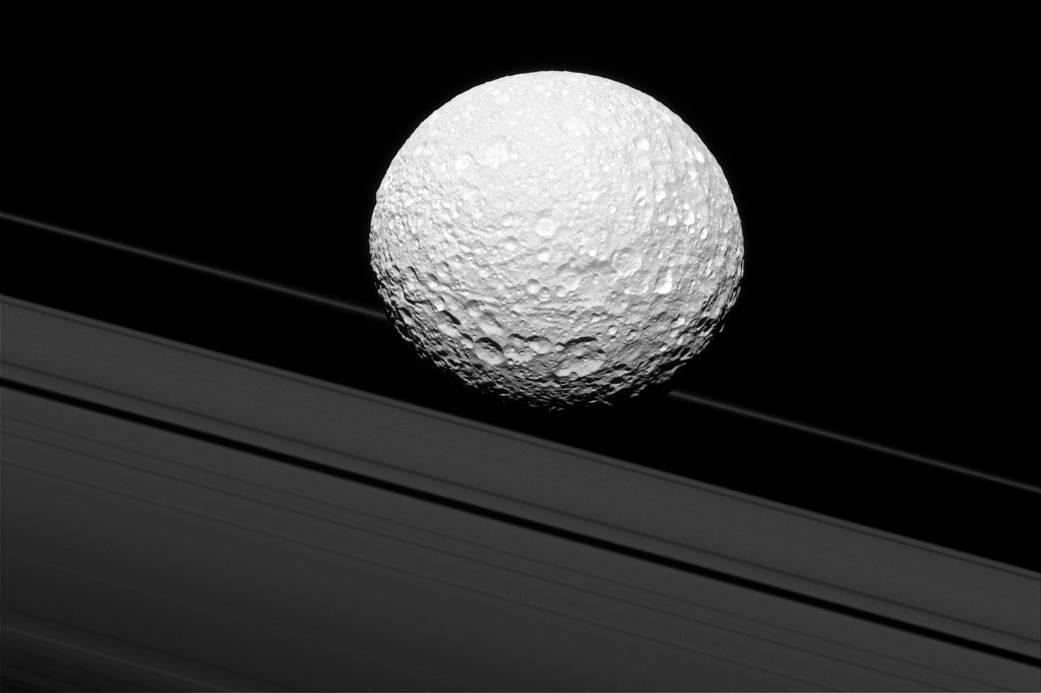
Come and see spectacular images of the amazing moons in our solar system and learn more about them in our free exhibition at the Royal Observatory Greenwich.
The exhibition is open daily until 20 March 2020.
See more of the night sky
Come on an amazing tour of this month's night sky in our Sky Tonight planetarium show delivered live by a Royal Observatory Greenwich astronomer.
See the Sky Tonight planetarium show
Central image: © Christina Irakleous
Resources for teachers and students
The Royal Observatory learning team has also created
- Free animated videos that answer the biggest questions in astronomy and free resources to go alongside them.
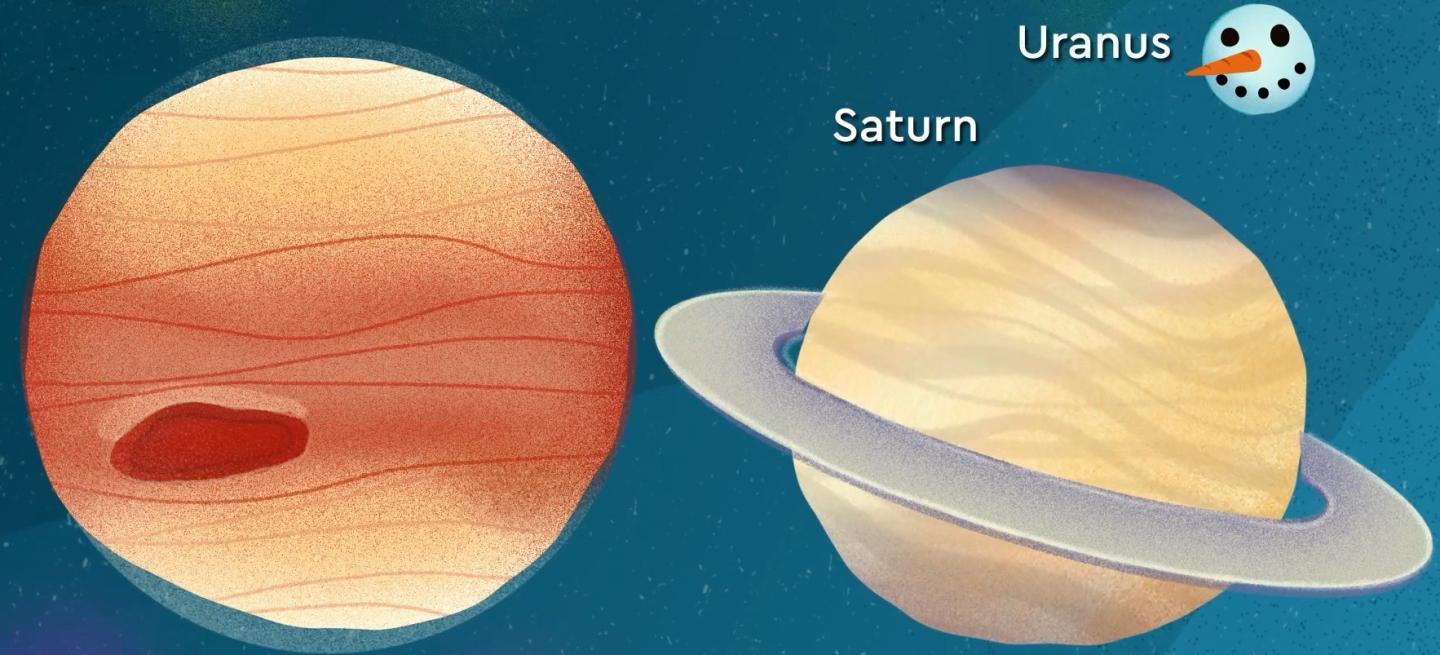
- A whole host of podcasts featuring interviews with real space scientists, astronauts and active researchers working in UK universities.
